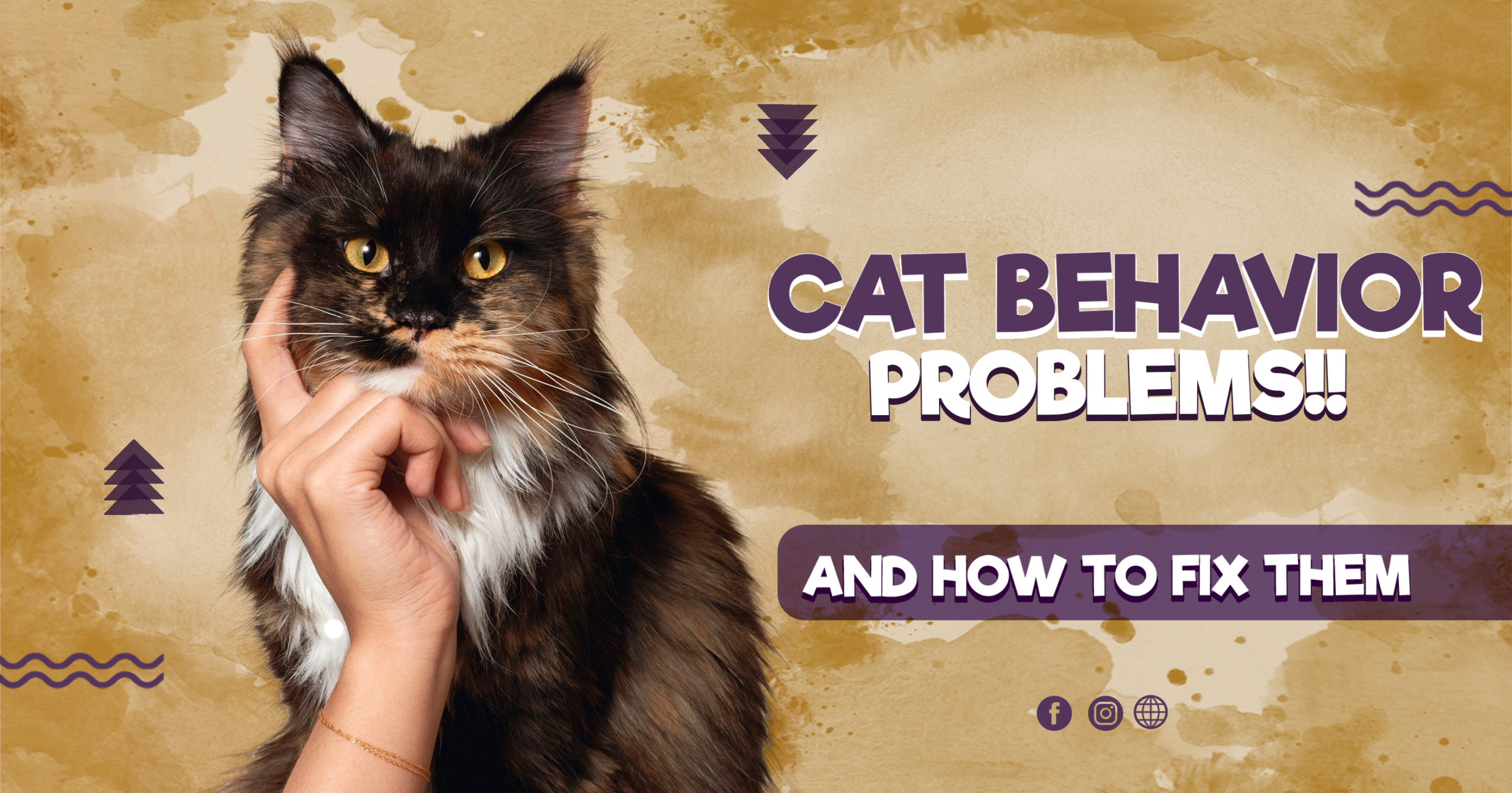
11 Apr 8 cat behavior problems and their fix
Index
- Avoiding the litter box
- Urine spraying
- Scratching
- Aggression
- Excessive meowing
- Nibbling on fingers
- Separation anxiety
- Excessive grooming
Cat behavior can be confusing, but sometimes we wish we understood it, especially when it starts causing problems. Here are 8 of the most common cat behavior problems and how to deal with them.
1. Avoiding the litter box
Is your cat refusing to use the litter box? It’s usually because they don’t like the litter or the box.
What to do?
In an uncovered box, use unscented litter and clean it at least once per day. Place the box somewhere quiet and more private. Use multiple boxes and different litters to see what works best.
For different litter options you can visit our website here
2. Urine spraying
Cats can use their urine to tell other cats to “back off.” When they’re in a fight with another cat, insecure, or looking for a mate, they’ll do it. If there is conflict, there are several cats in the house, or there are changes in routine, a cat is more likely to mark their territory. Have your cat neutered or spayed to stop the spraying. Use an enzymatic cleaner to clean the areas where they sprayed. If your cat continues to spray, seek guidance from your vet.
3. Scratching
Scratching is a favorite activity of cats. It’s something they do to have fun, stretch their muscles, sharpen their claws, and mark their territory. That’s bad news for your carpets, curtains, and furniture. Place various sorts of scratching posts throughout your home. Make sure they’re sturdy so they don’t fall over when your cat scratches. Then, invite them to play by hanging toys on them.
4. Aggression
Contact your vet straight away if your cat becomes aggressive. Do not approach a cat who has a stiff-legged stance, widened eyes, or is growling. Even if you have a strong bond with the cat, do not touch or approach it. It isn’t that your cat is a “bad” cat. It could be scared or stressed. However, your cat’s and your family’s safety must come first, so seek professional help.
5. Excessive meowing
A trip to the vet is in order if your cat has suddenly become very vocal. If there are no health issues, your chatty cat probably just wants to spend some quality time with its favorite human. Have your cat chase a lure for five minutes every couple of hours. It expends energy this way, and you get some quiet time, so everyone wins.
6. Nibbling on fingers
It may be sweet at first, but kitten finger-nibbling can become painful with time—and keep in mind that kittens grow.
When a kitten doesn’t have a playmate, it’s much more likely to make you its chew toy, therefore adopting kittens in pairs is typically a good decision. Also have a variety of legal chew toys on hand at all times.
7. Separation anxiety
Cats are social creatures. They may become noisy or spray your house if left alone for long periods of time. Ignore your cat for 15 minutes before you leave and 15 minutes after you return to get them used to it. When you leave, leave some of his favorite toys out and put them away when you get back. Spend time with your cat regularly still. If you still need assistance, speak with your vet about other options or medicine.
8. Excessive grooming
Cats groom themselves to look good and to relax but, it can harm their skin if they overdo it. Check with your vet first to see if your cat has any skin issues. If it is still grooming excessively, it can be due to stress, such as a change in routine or the addition of a new pet to the household, soothe them by playing with them and making them feel at ease.



Sorry, the comment form is closed at this time.